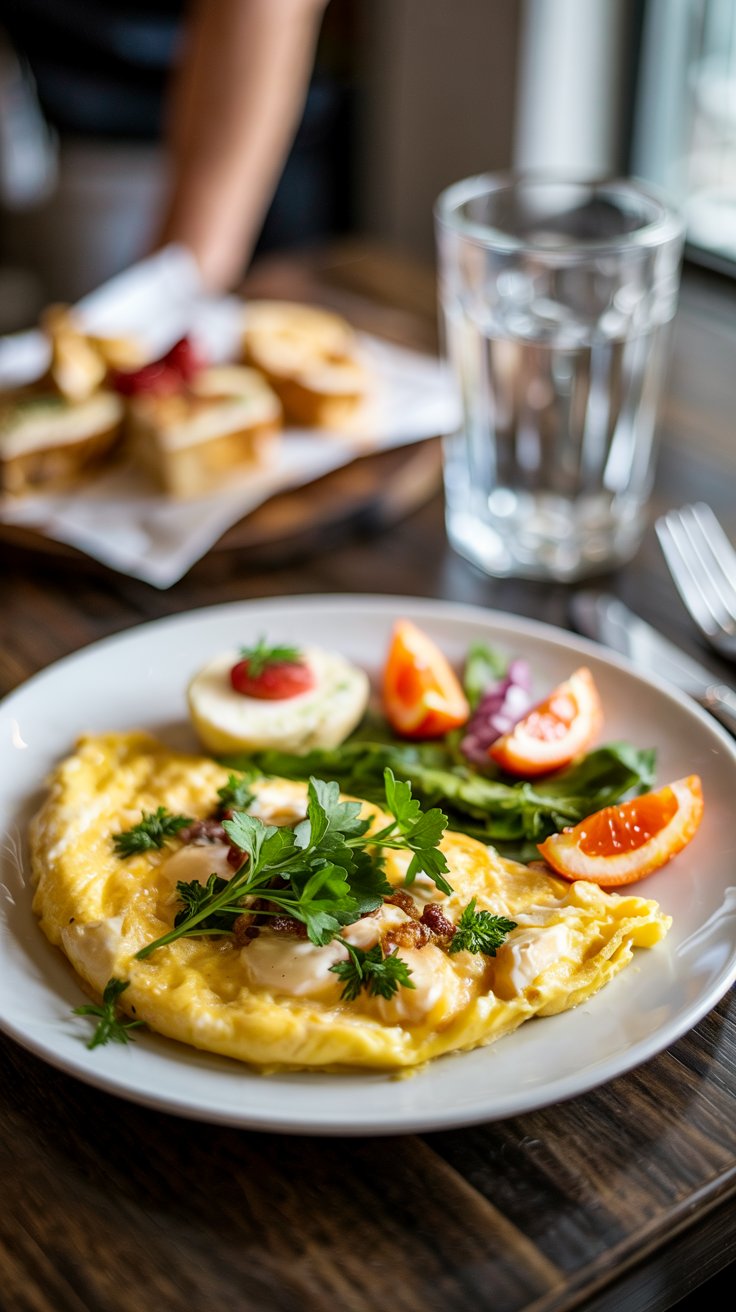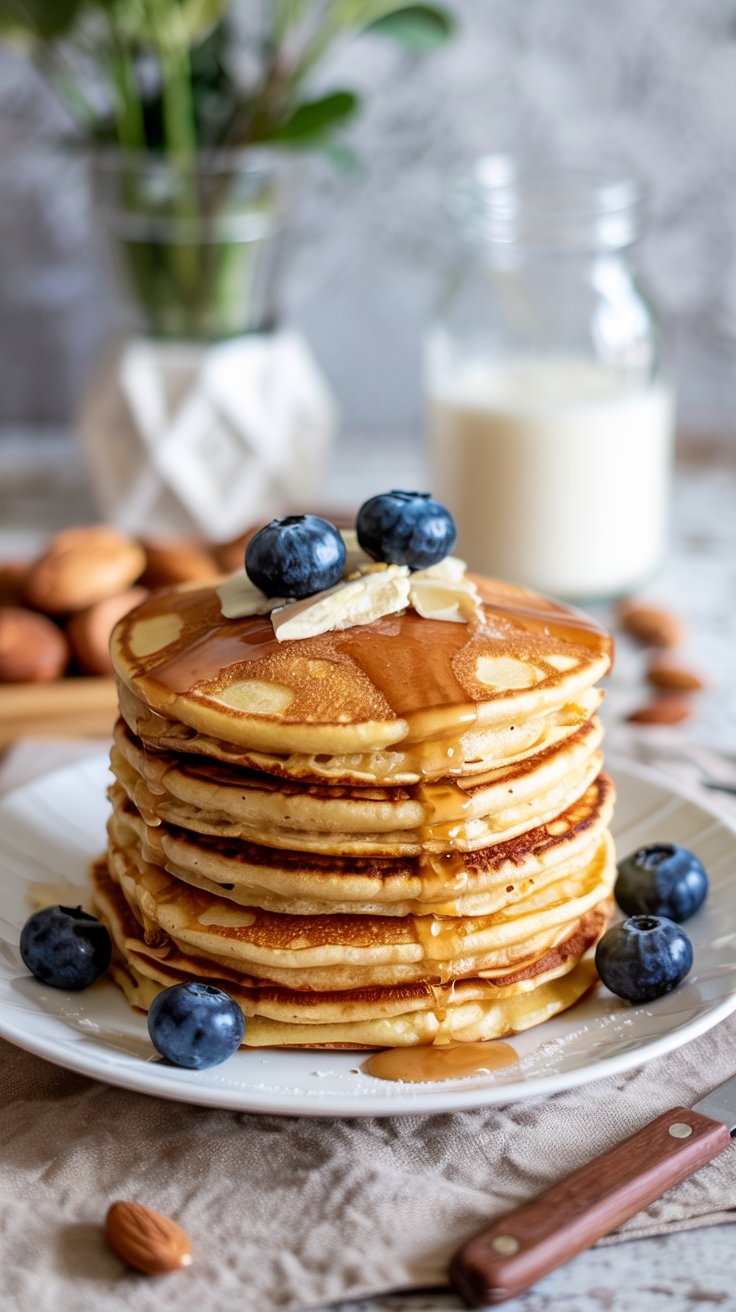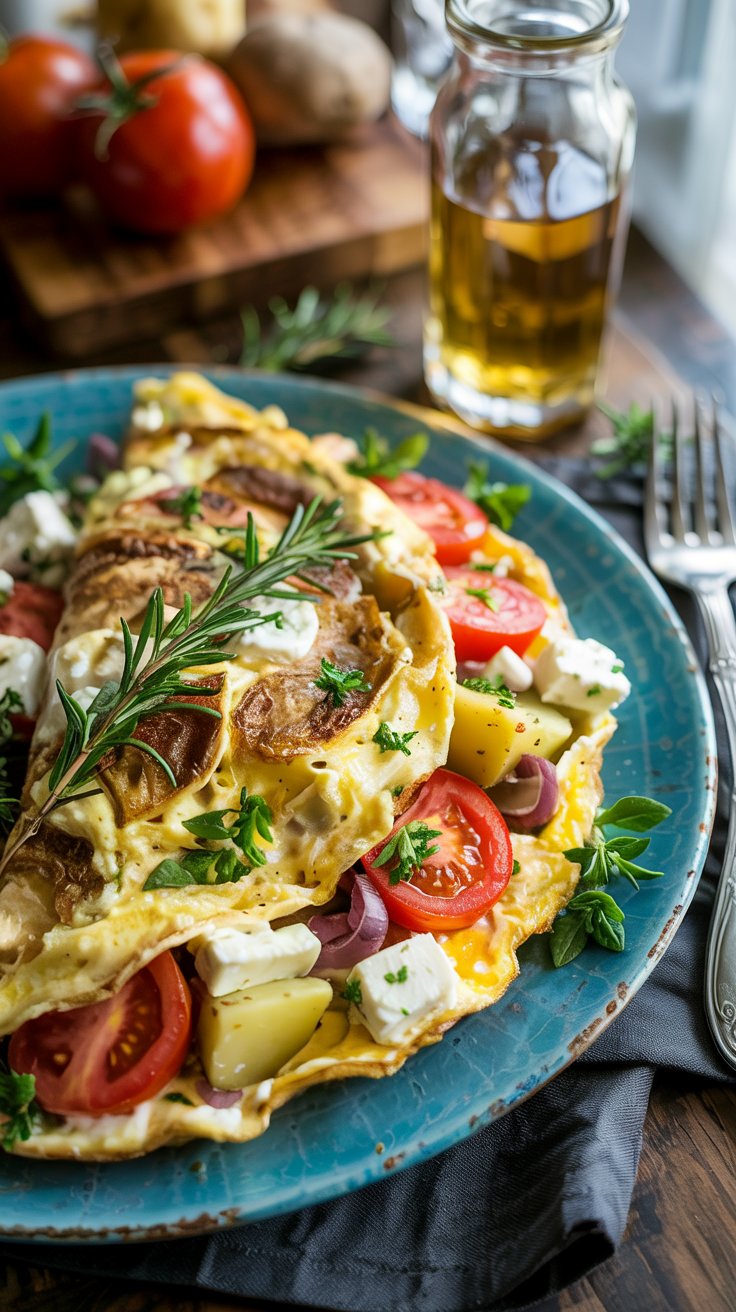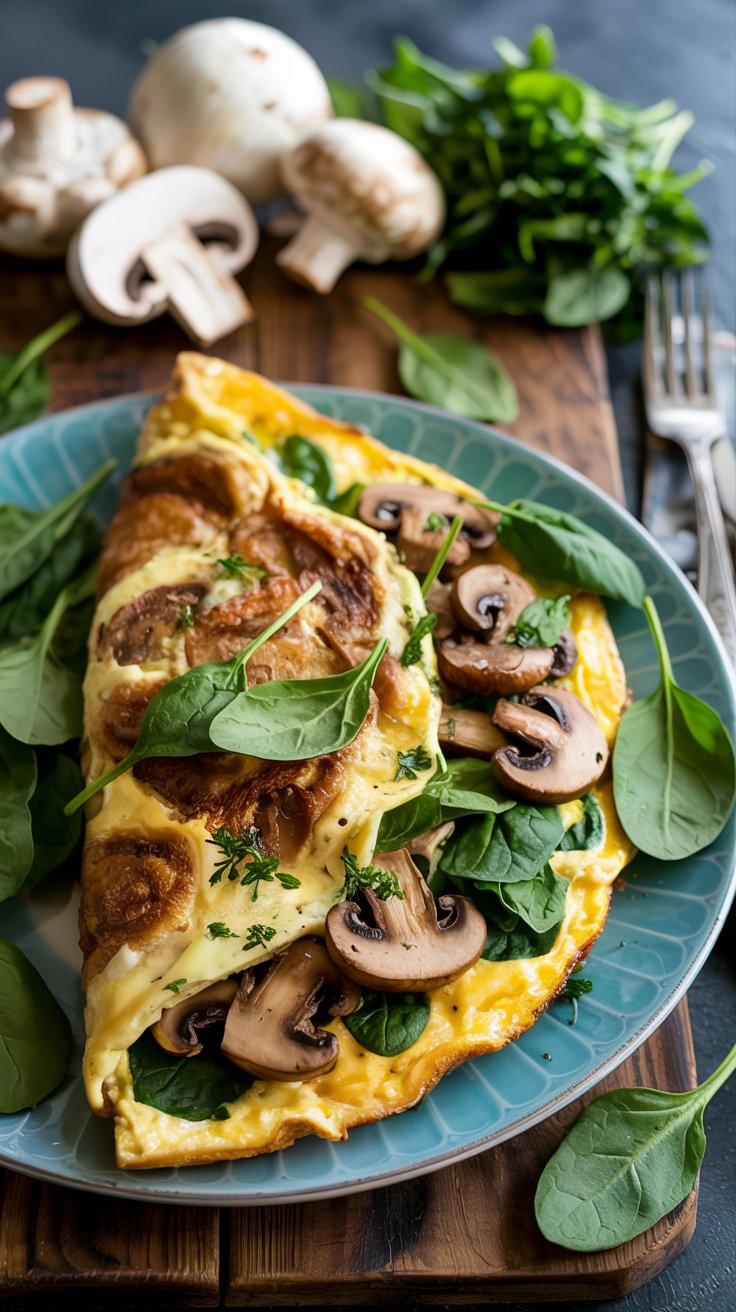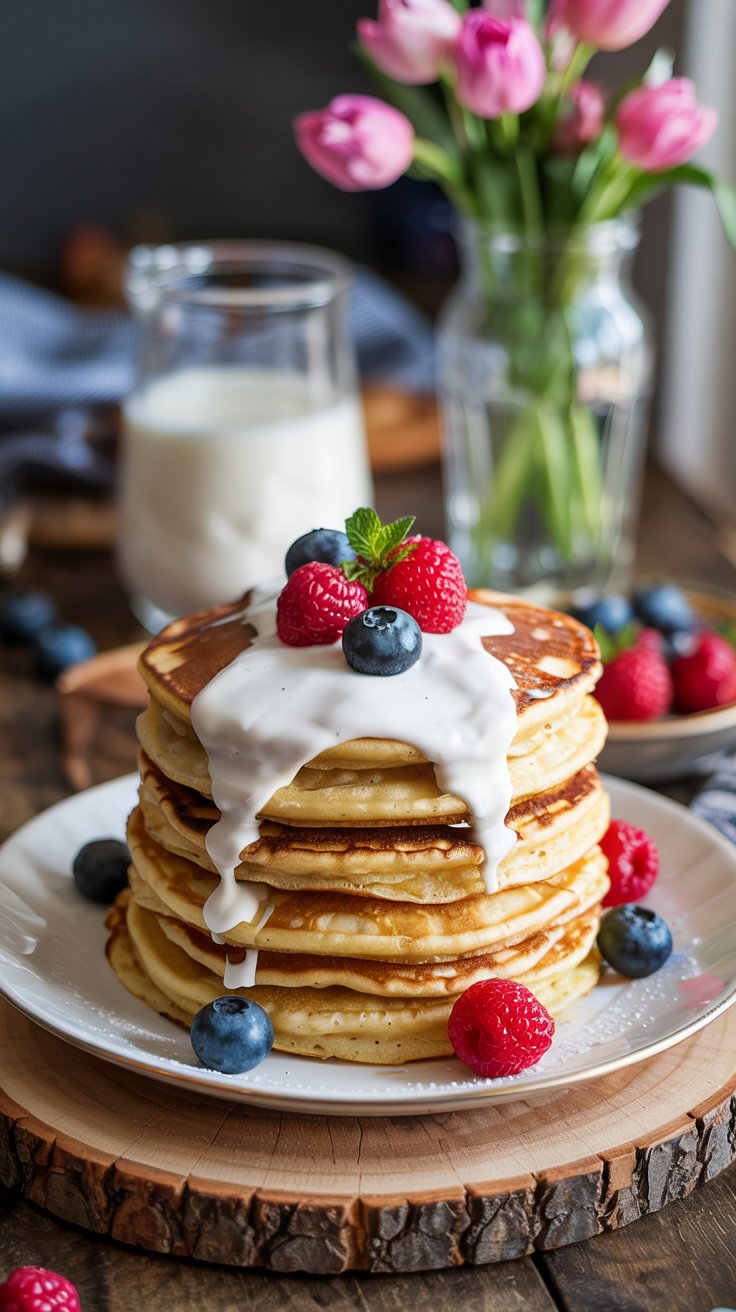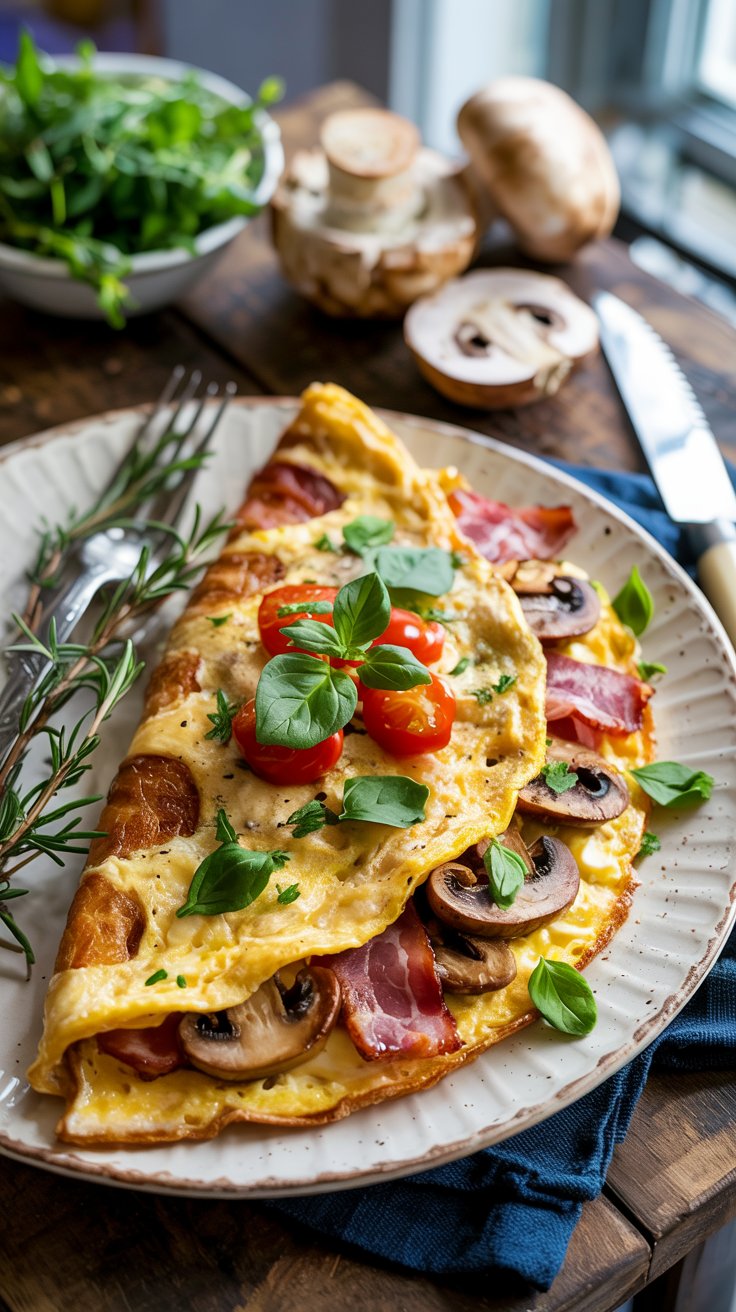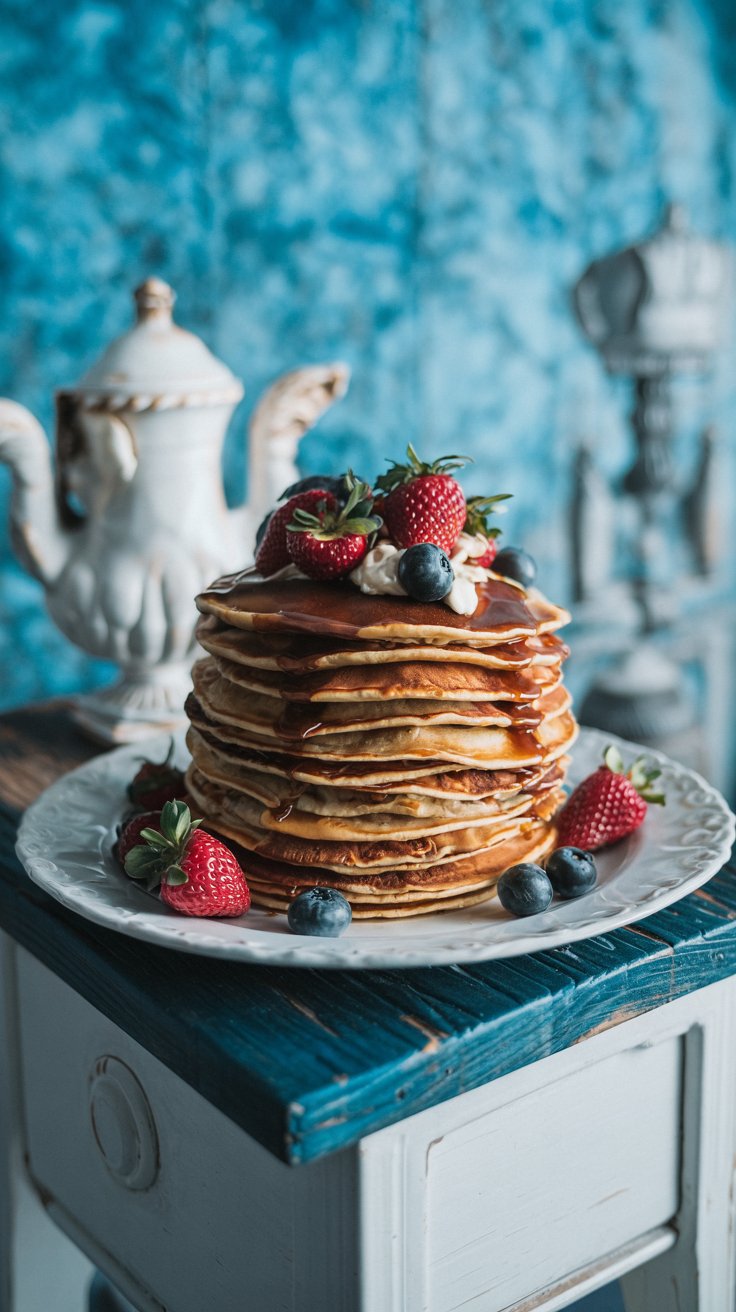French omelette
There’s something almost magical about a perfectly cooked French omelette. Unlike its American cousin, which is often folded over and browned, the French version is all about a delicate, soft, and custardy texture with a smooth, pale exterior. It sounds fancy, I know! But honestly, once you get the hang of the technique, it’s a super quick and satisfying meal for any time of day. Let’s get cracking!
Ingredients for this French Omelette
This is for a classic, single-serving omelette. Feel free to double it up!
- 3 large, fresh eggs (the fresher, the better, seriously!)
- 1 tablespoon unsalted butter
- Salt and freshly ground black pepper, to taste
- Optional: 2 tablespoons of finely chopped fresh chives or other soft herbs (like parsley or tarragon)
- Optional fillings: a little grated Gruyère cheese, sautéed mushrooms, or Boursin cheese are all fantastic.
Instructions
- First things first, crack your eggs into a bowl. Now, here’s a key step… whisk them like you mean it! You want them to be completely uniform in color, with no streaks of white or yolk. A fork works just fine. Season them well with salt and pepper, and if you’re using herbs, stir them in now.
- Grab an 8-inch non-stick skillet. This is pretty important for helping the omelette slide out later. Place it over medium-high heat. Let it get properly hot… but not smoking!
- Add the butter to the hot pan. Let it melt and foam up. Swirl it around to coat the entire bottom of the skillet. Just as the foam starts to calm down, it’s go-time.
- Pour the egg mixture into the pan. Let it sit for just a few seconds until the edges begin to set. Then, using a rubber spatula, start stirring quickly in small, circular motions while shaking the pan back and forth with your other hand. It feels a bit like rubbing your tummy and patting your head at first, but you’ll get it! This motion is what creates those lovely, soft curds. Keep doing this for about 30-45 seconds.
- Once the eggs are mostly set but still look a little wet and glossy on top (like soft scrambled eggs), stop stirring. Smooth the surface with your spatula. If you’re adding cheese or other fillings, now’s the moment to sprinkle them down the center.
- Time to roll! Tilt the pan away from you at about a 45-degree angle. Use your spatula to gently nudge the edge of the omelette closest to the handle, folding it over by about a third toward the center. Then, still tilting the pan, give it a little tap on the handle to help the omelette roll over itself into a neat cylinder or cigar shape.
- Finally, hold your plate close to the pan and gently invert the omelette so it lands seam-side down. It should look smooth and beautiful! For a little extra shine, you can rub the top with a tiny piece of cold butter. Serve it immediately and enjoy that beautiful, creamy center. Bon appétit!
Cook and Prep Times
- Prep time: About 2 minutes (just cracking and whisking eggs!)
- Cook time: Around 2-3 minutes
- Total time: 5 minutes flat! It’s the perfect quick meal.
Nutritional Information
(This is an approximation for one classic omelette without fillings. Values can change based on the size of your eggs and the amount of butter used.)
- Calories: ~300 kcal
- Protein: ~19 g
- Fat: ~24 g
- Carbohydrates: ~1 g
Frequently Asked Questions
Why is my French omelette rubbery?
Ah, the classic culprit here is almost always overcooking! A French omelette is meant to be custardy and soft on the inside. If you cook it until it’s completely dry, the proteins in the eggs tighten up too much, which leads to that rubbery texture. The trick is to take it off the heat when the top still looks a little wet and glossy. It will continue to cook from the residual heat as you roll it and plate it. Also, cooking on a heat that’s too high can cook it too fast, so aim for a nice medium to medium-high heat.
What is the best pan for a French omelette?
A good non-stick skillet is your best friend here, honestly. It makes the whole process, especially the final roll and slide onto the plate, so much easier and less stressful. An 8-inch pan is perfect for a 3-egg omelette. While you can technically make one in a well-seasoned carbon steel or cast-iron pan, a non-stick is way more forgiving for this delicate task.
What is the difference between an omelette and a French omelette?
The main difference comes down to technique and texture. An American-style omelette is typically cooked until it’s fully set and often develops a bit of browning on the outside. It’s then folded in half over its fillings. A French omelette, however, is cooked quickly over higher heat with constant agitation (stirring and shaking) to create small curds. It’s not browned at all, the exterior should be smooth and pale yellow. Instead of being folded in half, it’s rolled into a cylinder or oval shape, and the interior is famously soft, creamy, and almost sauce-like. It’s all about that velvety texture!
French omelette
1
raciones2
minutes2
minutes300
kcalIngredients
3 large, fresh eggs (the fresher, the better, seriously!)
1 tablespoon unsalted butter
Salt and freshly ground black pepper, to taste
Optional: 2 tablespoons of finely chopped fresh chives or other soft herbs (like parsley or tarragon)
Optional fillings: a little grated Gruyère cheese, sautéed mushrooms, or Boursin cheese are all fantastic.
Directions
- First things first, crack your eggs into a bowl. Now, here’s a key step… whisk them like you mean it! You want them to be completely uniform in color, with no streaks of white or yolk. A fork works just fine. Season them well with salt and pepper, and if you’re using herbs, stir them in now.
- Grab an 8-inch non-stick skillet. This is pretty important for helping the omelette slide out later. Place it over medium-high heat. Let it get properly hot… but not smoking!
- Add the butter to the hot pan. Let it melt and foam up. Swirl it around to coat the entire bottom of the skillet. Just as the foam starts to calm down, it’s go-time.
- Pour the egg mixture into the pan. Let it sit for just a few seconds until the edges begin to set. Then, using a rubber spatula, start stirring quickly in small, circular motions while shaking the pan back and forth with your other hand. It feels a bit like rubbing your tummy and patting your head at first, but you’ll get it! This motion is what creates those lovely, soft curds. Keep doing this for about 30-45 seconds.
- Once the eggs are mostly set but still look a little wet and glossy on top (like soft scrambled eggs), stop stirring. Smooth the surface with your spatula. If you’re adding cheese or other fillings, now’s the moment to sprinkle them down the center.
- Time to roll! Tilt the pan away from you at about a 45-degree angle. Use your spatula to gently nudge the edge of the omelette closest to the handle, folding it over by about a third toward the center. Then, still tilting the pan, give it a little tap on the handle to help the omelette roll over itself into a neat cylinder or cigar shape.
- Finally, hold your plate close to the pan and gently invert the omelette so it lands seam-side down. It should look smooth and beautiful! For a little extra shine, you can rub the top with a tiny piece of cold butter. Serve it immediately and enjoy that beautiful, creamy center. Bon appétit!

